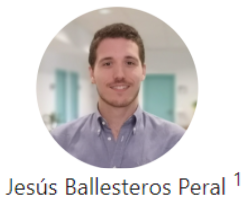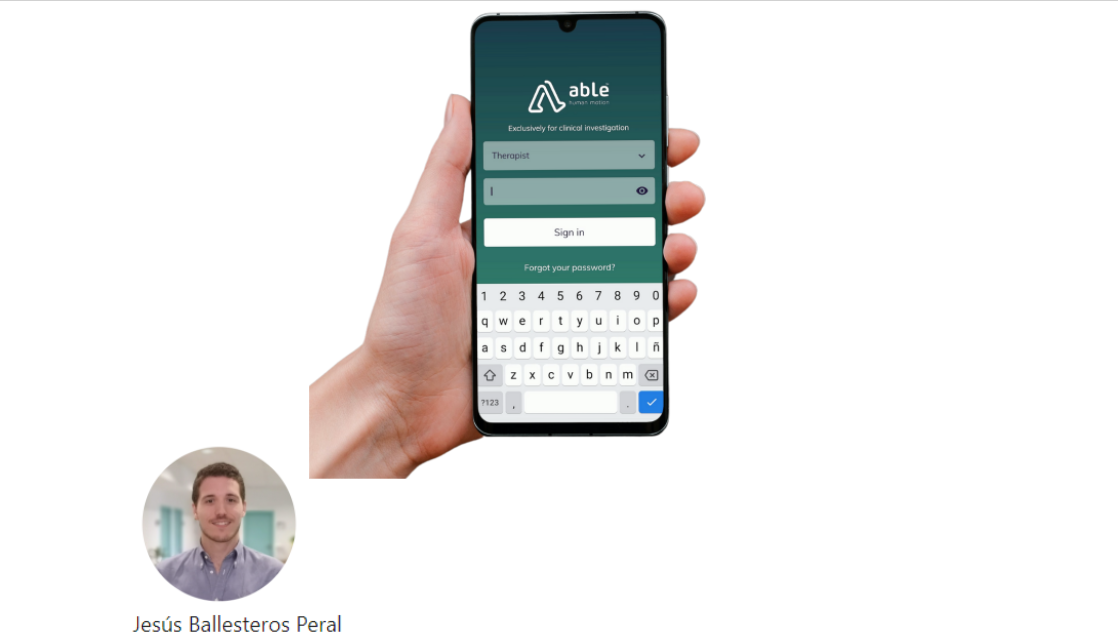
1 Software Engineer at ABLE Human Motion, Diagonal 647, 08028 Barcelona, Spain.
1. What is ABLE Care?
ABLE Care is a software application for smartphones that allows clinicians to control, adjust parameters and monitor ABLE Exoskeleton gait metrics in real-time during rehabilitation sessions.
In addition, ABLE Care serves as an intermediate platform to save the data collected during rehabilitation in the cloud storage system and allows the visualization of data recorded during rehabilitation sessions. In this way, ABLE Care allows the exoskeleton to be operated during the rehabilitation session, and is also a tool for monitoring the progress of each patient.
ABLE Care has been developed to be compatible with Android devices. Clinical institutions that purchase the ABLE Exoskeleton will be provided, along with it, the app installed on a smartphone that can be attached to the exoskeleton.
2. For whom and who can use it?
The app is designed for clinicians who have completed the certificate on the use of the ABLE Exoskeleton. The certificate is obtained after completing the training program provided by ABLE Human Motion and verifies that users are qualified to understand the system and properly operate the exoskeleton in different situations.
Thus, obtaining this certificate authorizes the use of the exoskeleton and provides clinical professionals with login ABLE Care credentials so they can carry out their rehabilitation sessions.

3. What data is collected and how does it help in rehabilitation?
The application stores patient data relevant to rehabilitation sessions, allowing the therapist to optimize the efficiency of these sessions. The data is entered by the therapist himself and includes information about the injury and the exoskeleton measures to adjust it to each patient in a personalized way according to their body dimensions. In this way, after the first training session, the exoskeleton’s adjustment procedure to the user’s body can be carried out in a much more agile way.
ABLE Care also allows the therapist to adjust the operating parameters of the exoskeleton, allowing rehabilitation therapy to be tailored to each patient’s needs. The application automatically saves the selected parameters in the patient’s profile, so the therapist does not have to adjust them again in the next rehabilitation session. These parameters can be adjusted at any time, since the patient’s needs may change as they progress through the rehabilitation program.
On the other hand, the metrics of the exoskeleton are displayed on the screen during the session, such as: the distance traveled, the length of each step, and data about the symmetry of gait. These metrics are also recorded as part of the session data to allow the therapist to track the patient’s progress through quantifiable and objective metrics.
Finally, the application also collects data on the operation of the exoskeleton to allow the continuous improvement of our product, while aiming for a seamless interaction between the user and the system.
4. What new features do you plan to add?
ABLE Care’s goal is to offer various tools to clinicians for preparing and reviewing sessions with their patients.
ABLE Care, in the same way as the exoskeleton, has been developed through co-creation with clinical professionals and patients that have been involved since the beginning of the project. In this sense, we have carried out several design iterations with the aim of incorporating feedback from users and optimizing the interaction with the exoskeleton, which has been changing to better adapt to the user needs.
Our next development goal is to work on improving the design of the sections of ABLE Care that are specifically used during the rehabilitation session. We want to provide a user experience that is easy to understand and operate, optimizing the app-exoskeleton integration so users feel like they are working with a single device.
In addition to working on the user interface, we are also putting a lot of emphasis at a functional level, to offer users a secure and robust system that is capable of meeting the most demanding requirements.
As a future challenge, we plan to add functionalities to ABLE Care that help clinicians to motivate patients during the rehabilitation program. We want to study the possibility of applying gamification techniques, and propose specific activities that are technologically more immersive and adapted to the patient’s progress.

5. With what technologies has ABLE Care been developed?
From the beginning, we wanted to design an interface to interact with the exoskeleton that was easy to use, while providing the information that therapists need. For this reason, apart from a good design, providing a familiar device such as a smartphone, which most people use on a daily basis was an essential.
We focus on the development of an Android smartphone application, but without closing the doors to other devices. This is why we chose Flutter for its development.
Flutter is a framework that allows you to build applications for various operating systems, including Android and iOS, with a single code base and its programming language, Dart. These tools allow us to focus on our most important goals for the end-user and reduce iterations during development compared to other current technologies.
As we have mentioned, ABLE Care serves as a guide and interface between two other important components in our system, the cloud storage system and the ABLE Exoskeleton. Mobile devices offer us the necessary technology for this communication between components with internet access and Bluetooth.
Bluetooth technology has been used for many years, which makes it a reliable and fast solution. Apart from offering good data transmission, one of the most interesting aspects is that it provides flexibility of movement and a wireless environment for the user, which facilitates interaction with the patient at all times.
Finally, the cloud provides an electronic solution (paperless) where the users of our application have access to the data they need at any time and place, through the Internet in a secure way.



